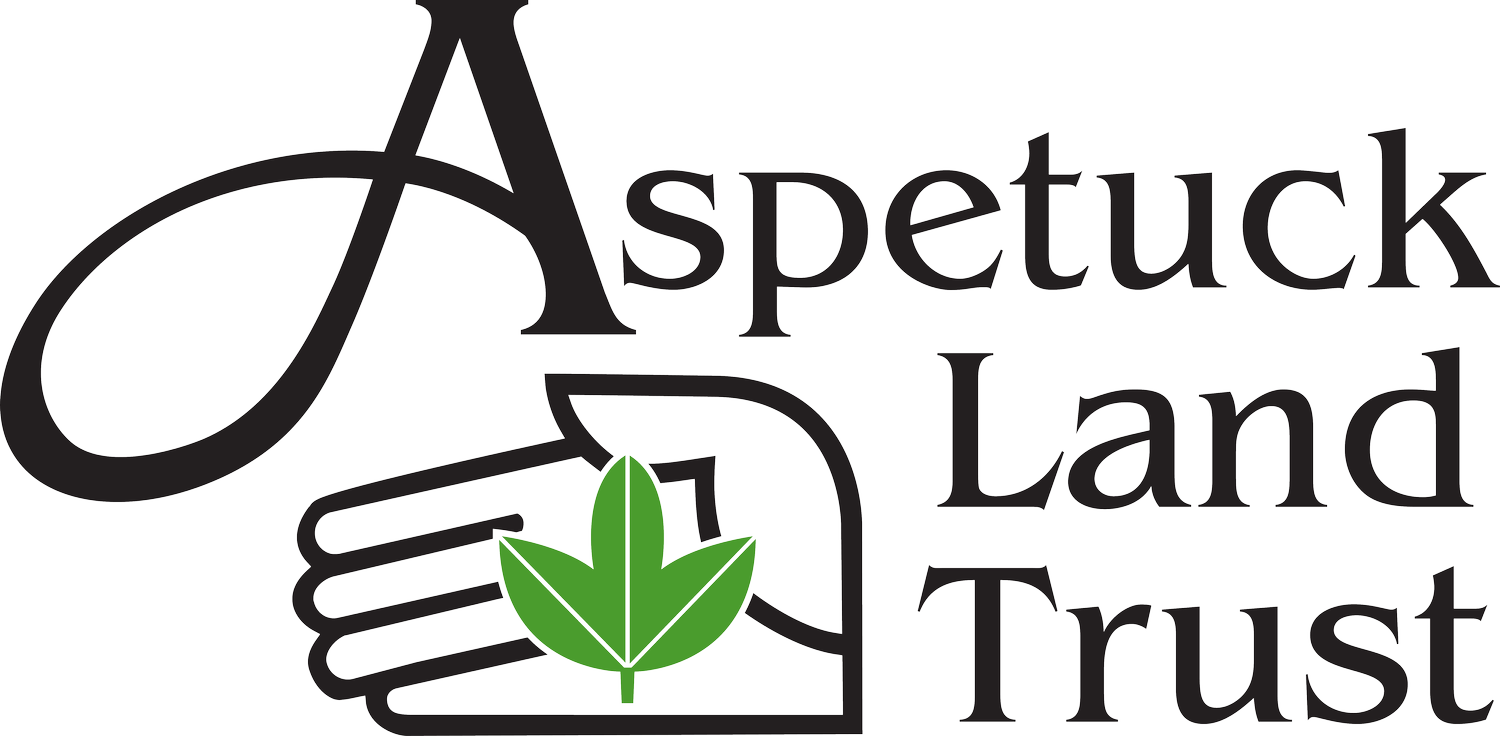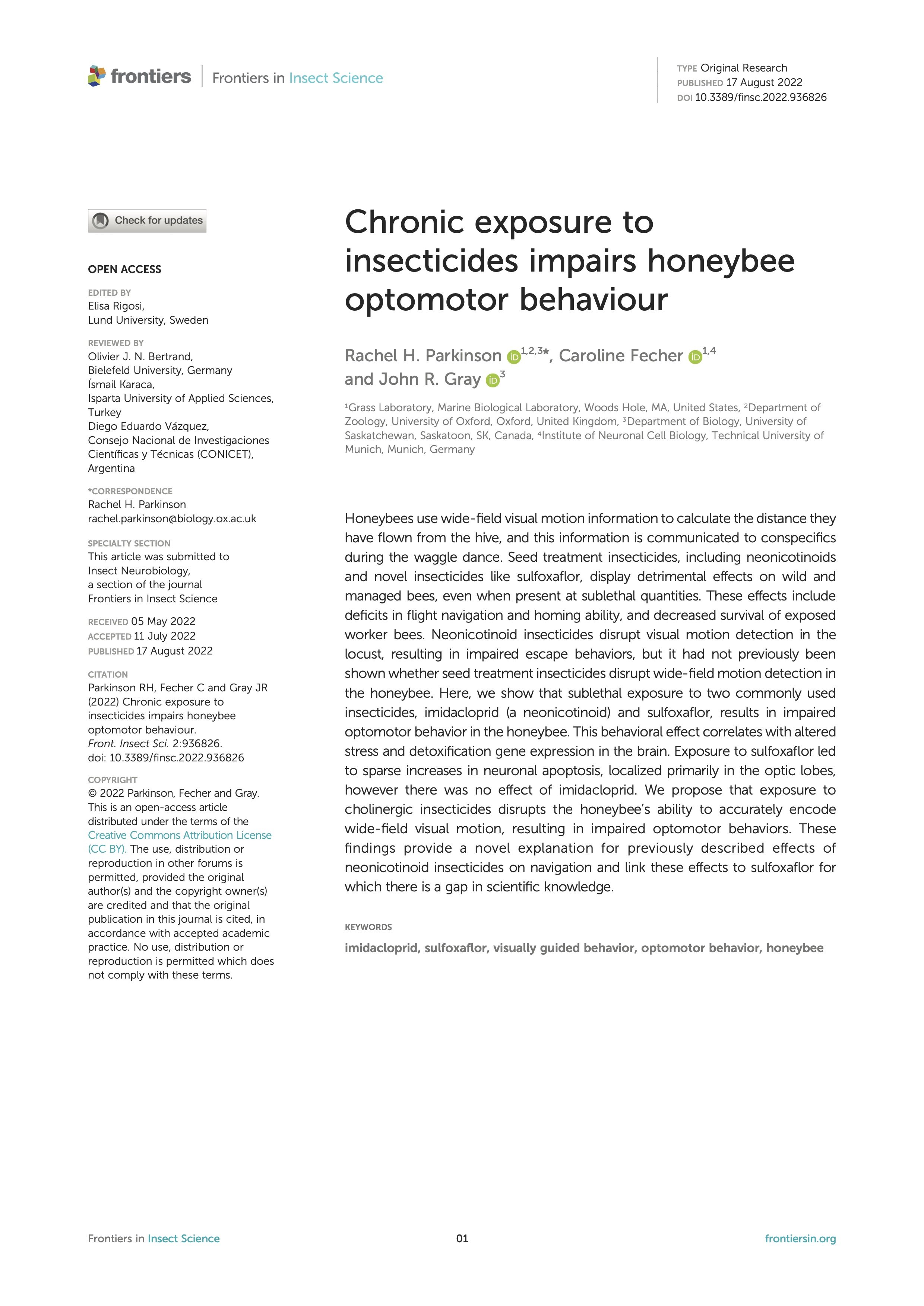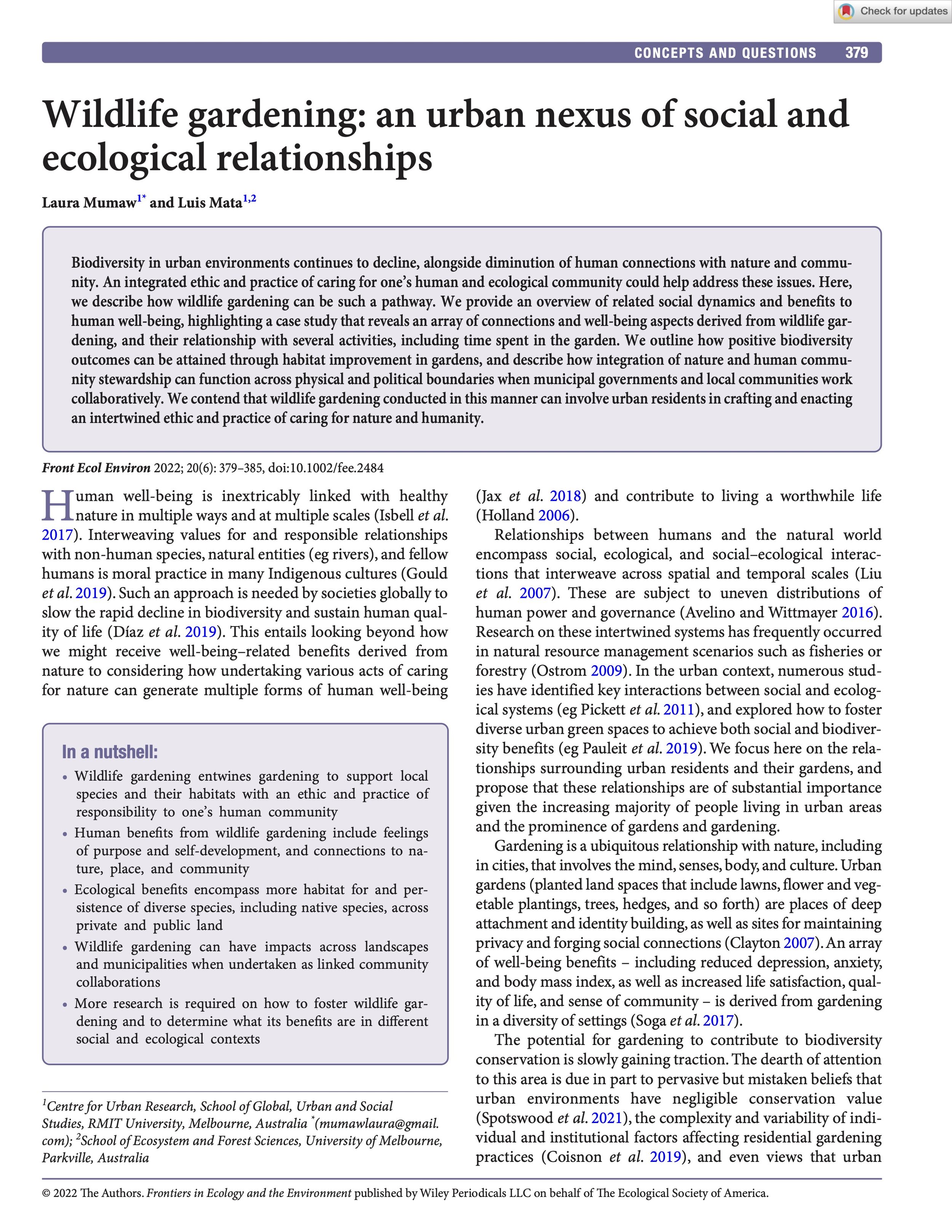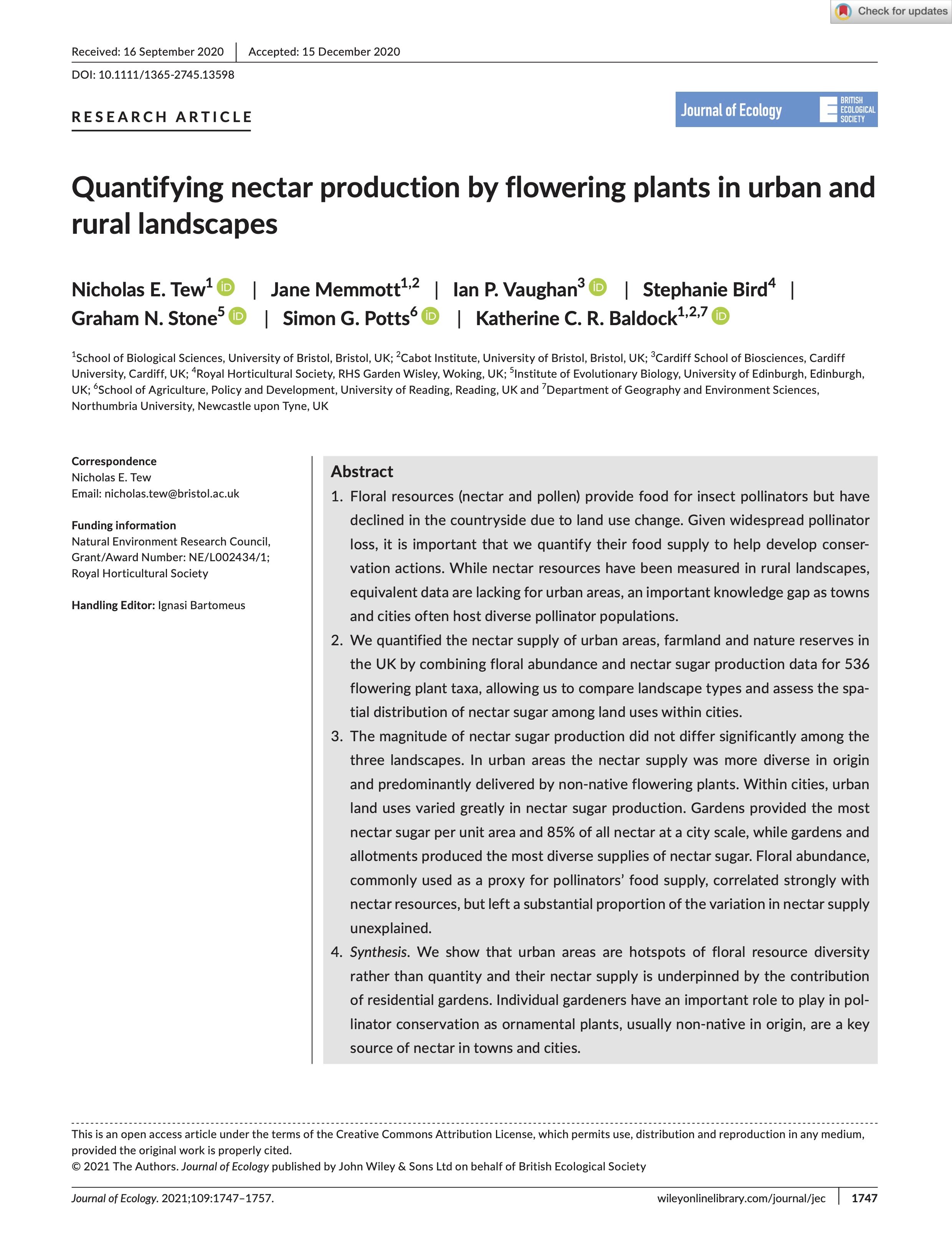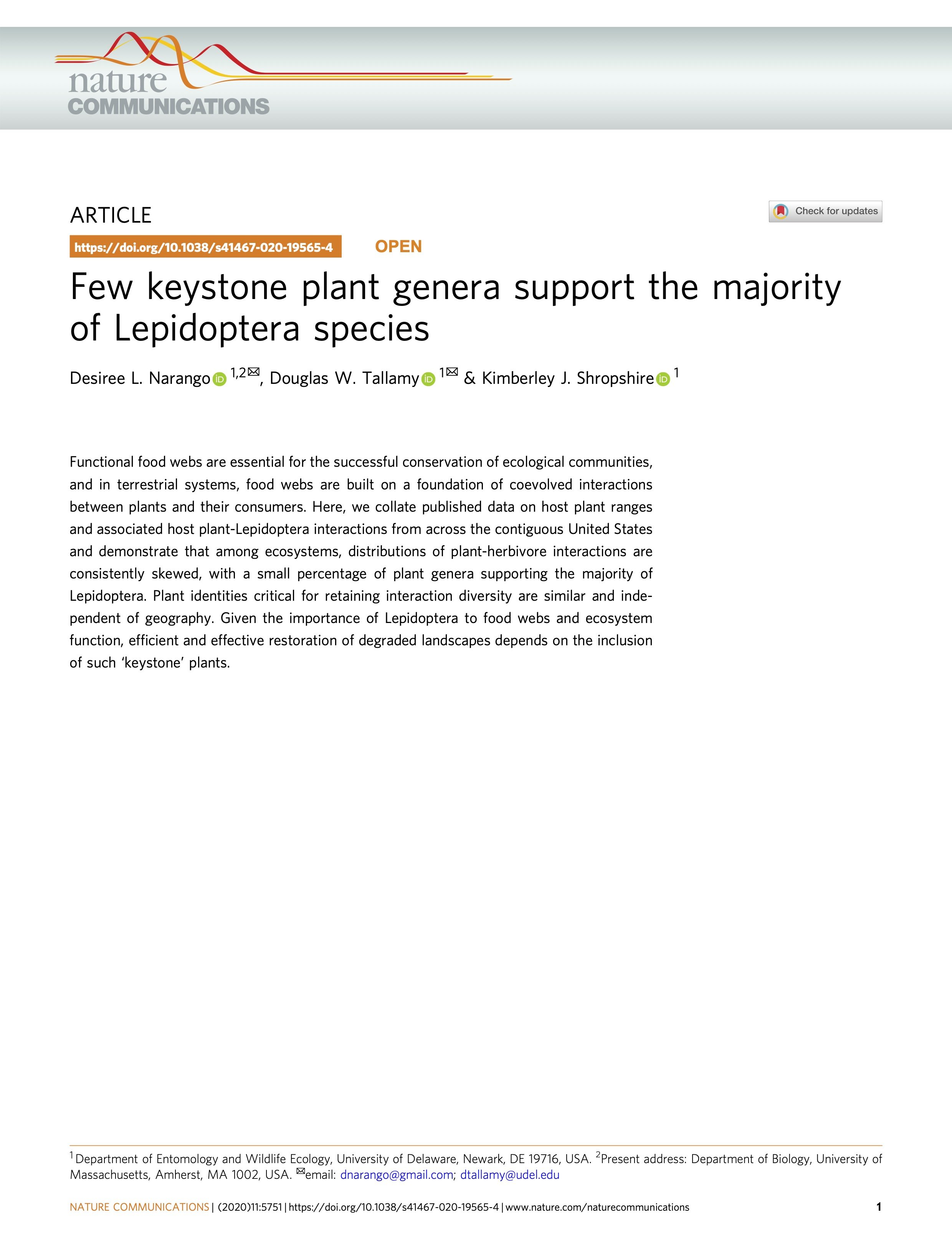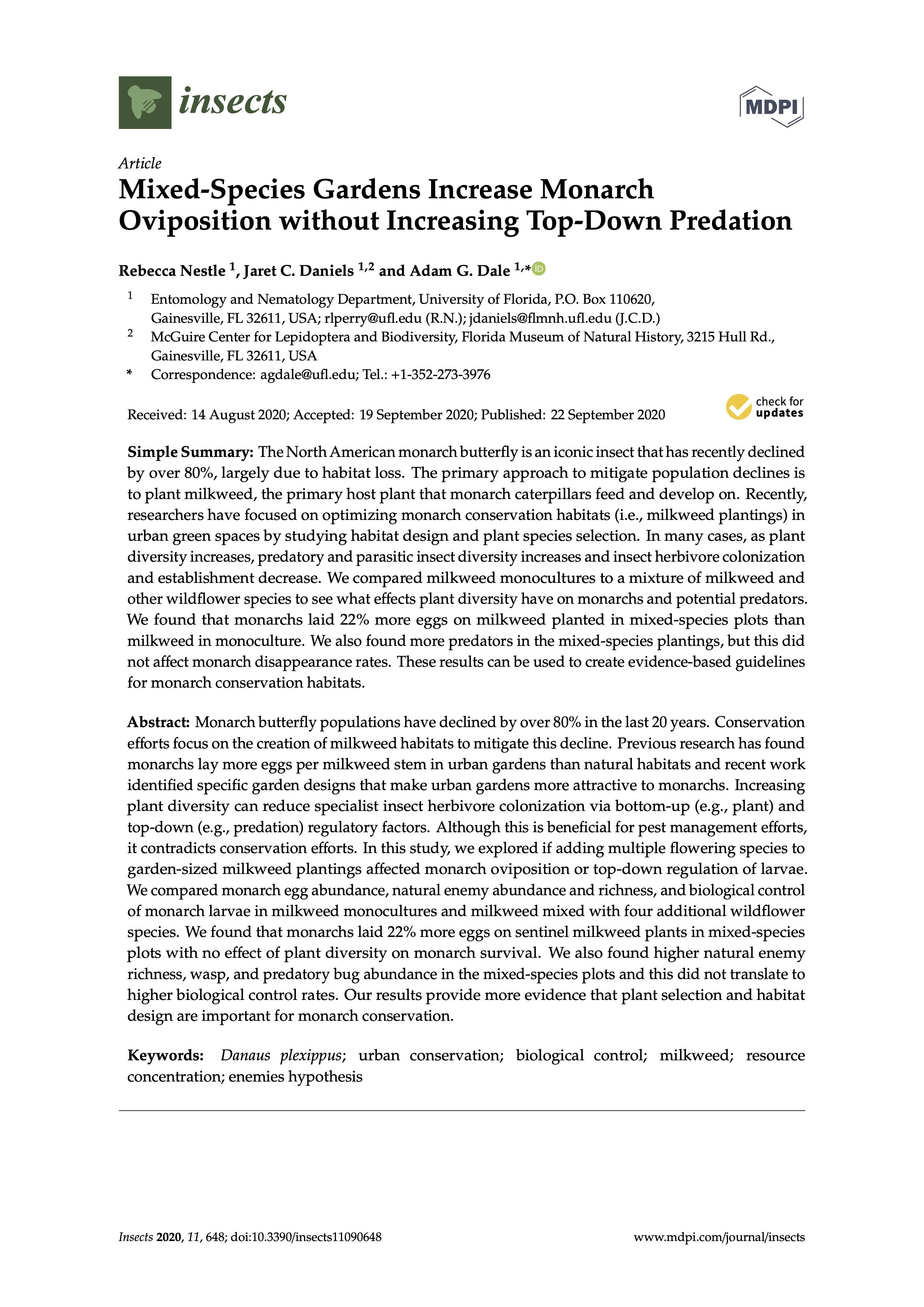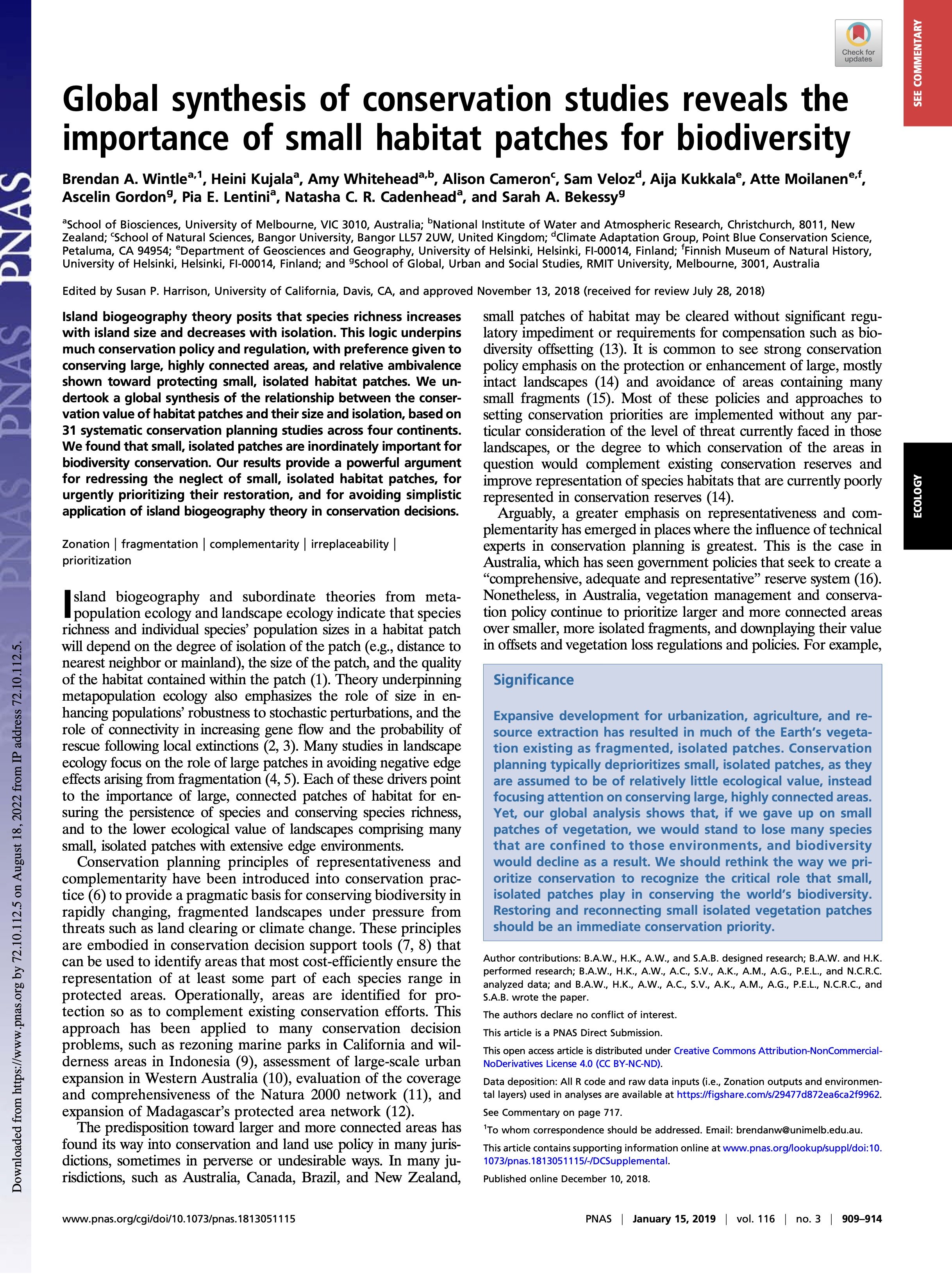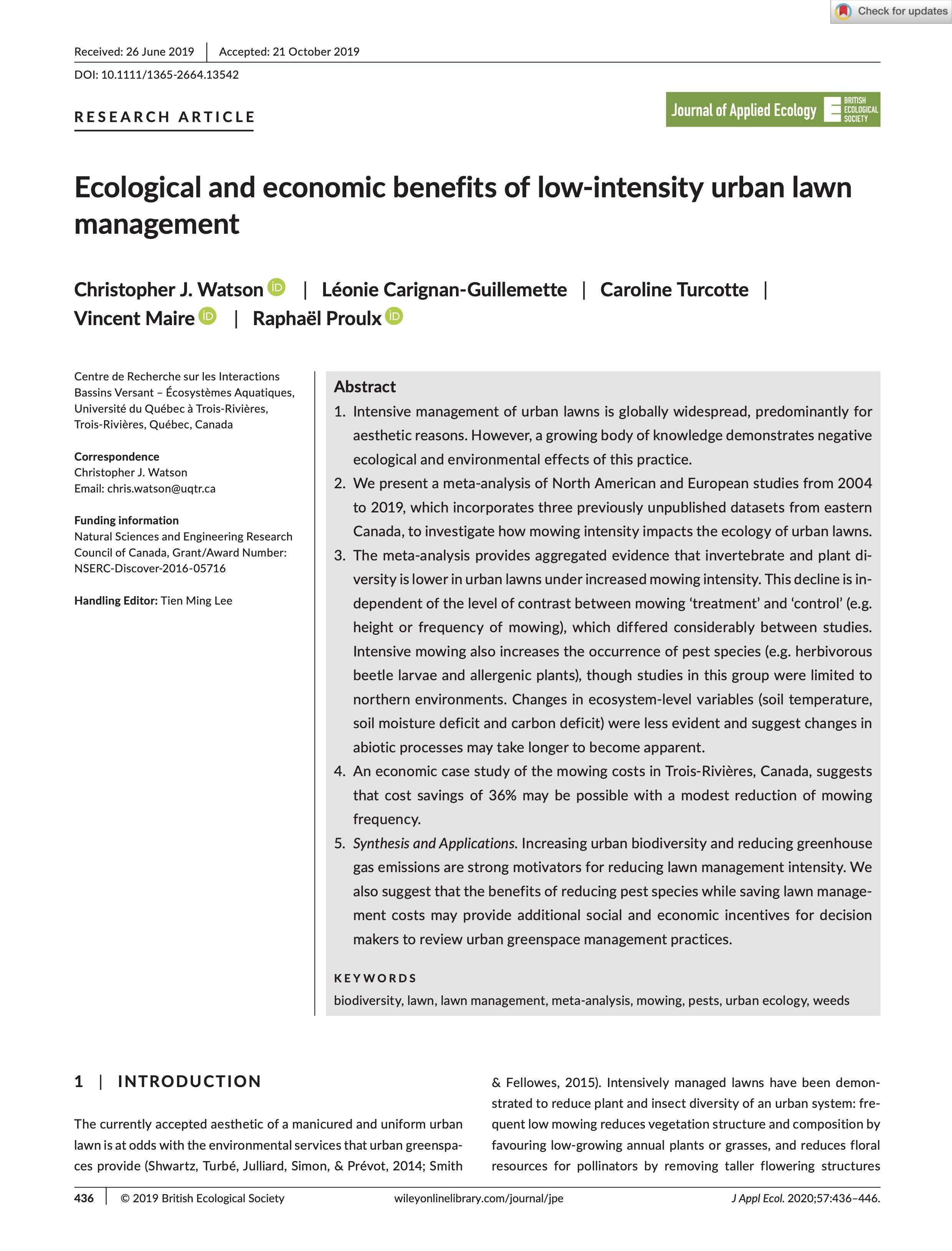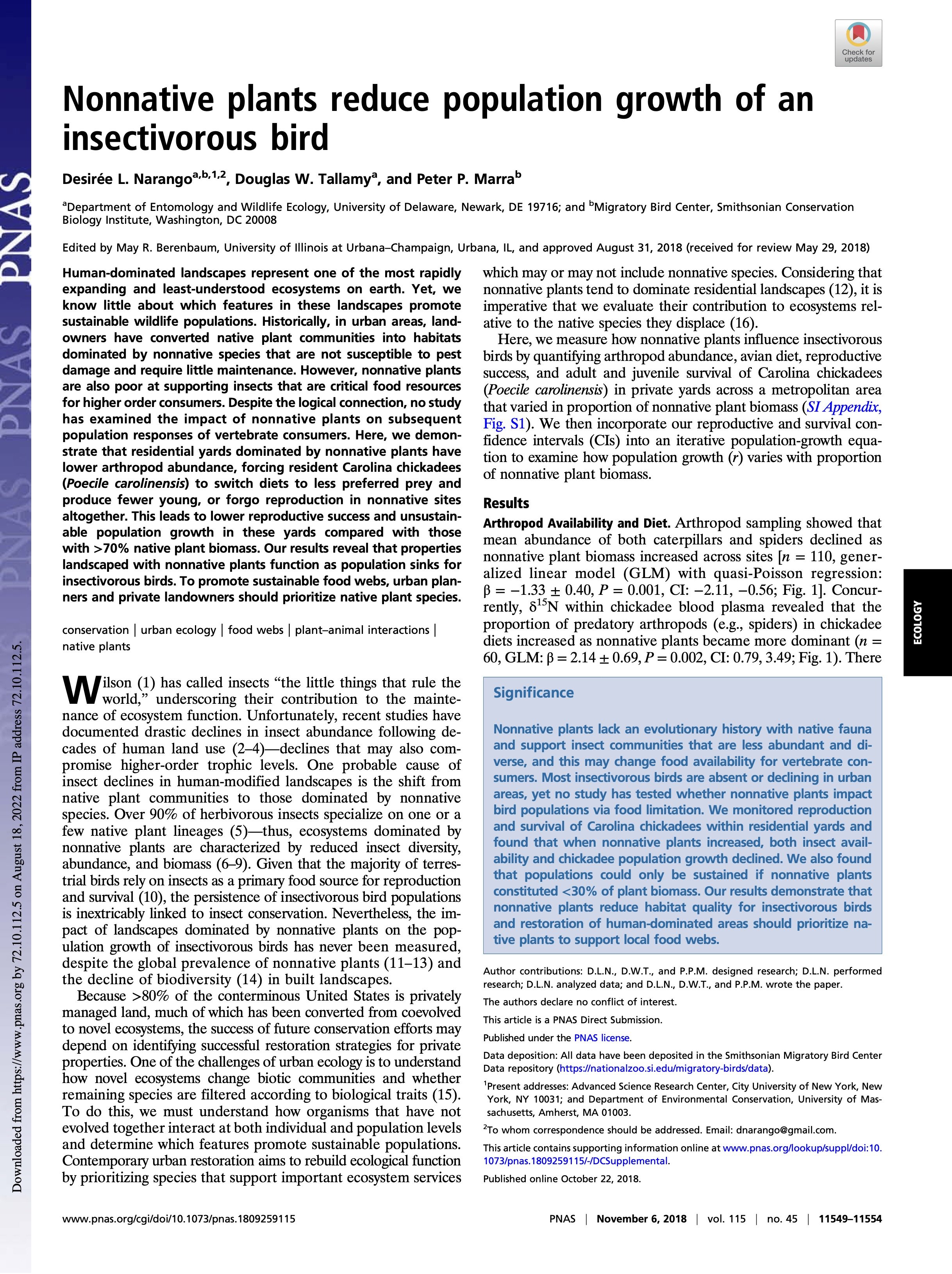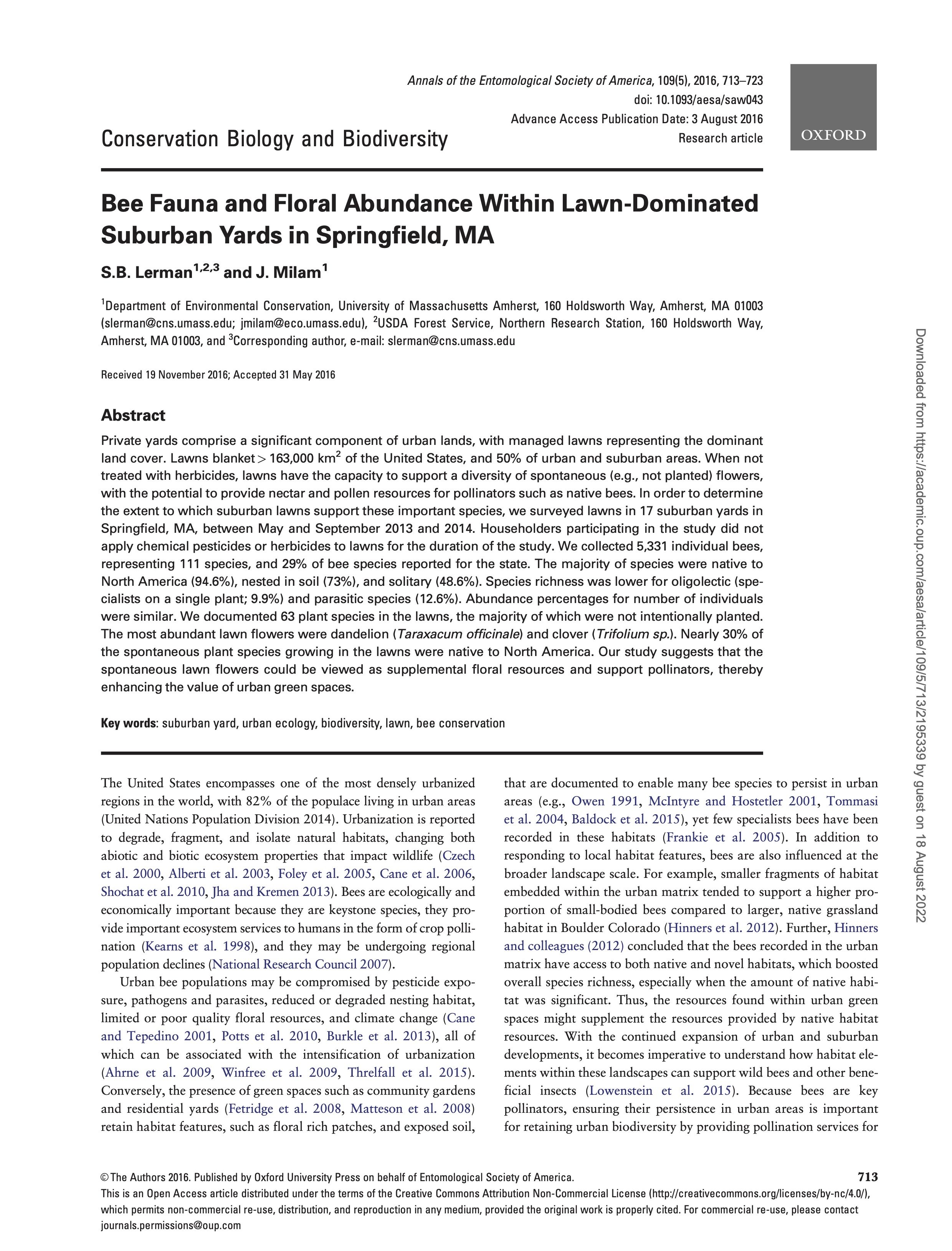Aspetuck Land Trust worked with landscape architect Evan Abramson to design a demonstration garden for the Haskins Preserve in Westport. We encourage you to visit Haskins to see the in-process wetland planting, entry garden, alternative lawn, and more. For those who would like to use the work at Haskins as a template, click here to access this pollinator toolkit. Additionally, Dr. Robert Gegear is measuring the abundance of endangered bees at the site.
Click on the images in the carousel to view an assortment of scientific studies. Current research demonstrates that connecting small parcels of land to larger open spaces, planting native over invasive plants, and integrating habitat into suburban areas is vital — for the birds, the bees, and us!
Chronic exposure to insecticides impairs honeybee optomotor behaviour: Frontiers in Insect Science, 2022
Wildlife gardening: an urban nexus of social and ecological relationships: Frontiers in Ecology and the Environment, 2022
Quantifying nectar production by flowering plants in urban and rural landscapes: Journal of Ecology, 2021
Few keystone plant genera support the majority of Lepidoptera species: Nature Communications, 2020
Mixed-species gardens increase Monarch oviposition without increasing top-down predation: Insects, 2020
Global synthesis of conservation studies reveals the importance of small habitat patches for biodiversity: Proceedings of the National Academy of Sciences, 2019
Ecological and economic benefits of low-intensity urban lawn management: Journal of Applied Ecology, 2019
Decline of the North American avifauna: Science, 2019
Nonnative plants reduce population growth of an insectivorous bird: Proceedings of the National Academy of Sciences, 2018
Bee Fauna and Floral Abundance Within Lawn-Dominated Suburban Yards in Springfield, MA: Annals of the Entomological Society of America, 2016
